Every loving parent strives to ensure that from the very first days of his baby's life, invest in him all the best and most valuable of what he possesses. And if there are usually no problems with choosing good and high-quality things for a child, then the issues of pedagogy and education for many parents are important and urgent. This is especially true for those mothers and fathers who became such for the first time. The questions that interest them can be very different, but they all boil down to one thing: what and how to do in order to convey the knowledge necessary for him to the baby and teach him one or another skill. Consider some principles that have been successfully applied by other parents for more than a dozen years, and try to figure out how to teach a child to distinguish colors.
The optimal age for teaching a child to distinguish colors is from 2 to 5 years.
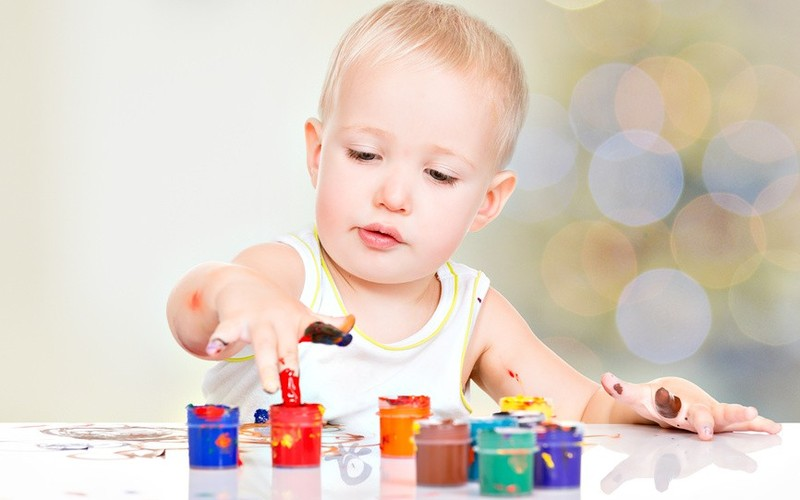
The principles of the formation of color perception functions in a child
Before starting to study practical tips and techniques, parents need to familiarize themselves with some features of the development of visual functions in children. This will help to use the acquired knowledge in the right way.
So, the child’s ability to focus on an object appears at the age of 2-3 months. Usually the first thing the baby learns to distinguish is the mother’s chest. This is due to the fact that at this age, the color perception of the child’s eye is set up so that the child can clearly see the mother’s nipple. The colors that he can distinguish between 2 and 6 months are in the wavelength range of a wide spectrum: red, pink, brown. The ability to distinguish the colors of the short wave, blue and green, appears to him closer to the seventh month of life, and a full-fledged color perception is formed in the child by eight years.
Tips and tricks from experienced moms and dads
Now that we know the basic principles of the formation of children's perception of the color palette, we can begin to study the recommendations and tips from more experienced parents.
- Teach from an early age. Do not play down children's learning abilities. Even if the child is still unable to speak, this does not mean that he is not able to understand or remember something. If you regularly communicate with your baby and tell him what color, for example, his favorite rattle, this is sure to be deposited in his head. And in the future, when he can consciously build various words, it will be easier for you to explain the difference between this or that color;
- Bind new knowledge to emotions. Human memory is designed in such a way that we best remember pictures, vivid images and emotions.It’s not in vain that they say: a person will remember not what you did for him, but what made him feel. Use this technique in teaching children. For example, start learning colors from your favorite fruit;
- Practical use. New knowledge should be used immediately by the child. If you have learned something new with your baby, try to make sure that he begins to apply it in life. They learned the red color, so when planning to go outside, ask him to bring you his red jacket. The more often you encourage your child to apply what you recently learned, the better it will be remembered;
- Encourage the child to share what he learned with others. After you have learned a new number or color, let the baby call grandfather or grandmother and talk about it. Very effectively, this principle works in conjunction with practical application. For example, dad came home from work in the evening and went to wash his hands before eating - let the little one give him a yellow towel;
- Speak different phrases. Always pronounce the color in a different context so that the child does not perceive it as one word: it is a red ball, a ball of red, it is a ball, it is red, etc .;
- Give up diminutive words (blue, red);
- Time out with shades - all light green, pink and blue shades are best left for later;
- Do not start learning a new color until the child has learned the previous one! (start with red, and then get acquainted with yellow, green, blue).
Despite the fact that this article is about how to teach a child to distinguish colors, the principles set forth above are applicable not only for this. Using them, you can learn both letters and numbers. Below we will look at several effective methods that will help parents in teaching their children a color palette.
Five techniques
There are a huge number of various ways using which you can to teach a child already in three years to distinguish six colors (red, blue, yellow, green, white and black), and more. But if you delve into their essence, then almost all of them come down to five simple pedagogical techniques. We will talk about them below.
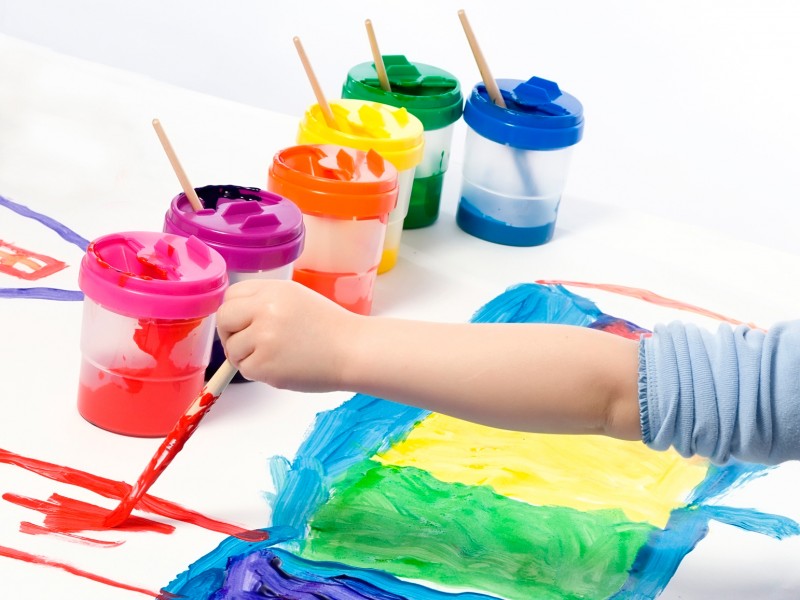
- Non-formal learning. The essence of this method is to educate the child in the process of everyday communication. For example, on the way to a park or kindergarten, the baby is offered to count together green cars that will pass him. Naturally, before this, the parent must show the crumbs what the green color looks like. The effectiveness of this method lies in the fact that the child is given complete freedom of action, no one limits him to anything. He can do whatever he wants on the road, the main thing is that he does not forget to count green cars. By the way, the number of counted cars also does not matter: ten drove, and counted only two - well done!
- Creativity. At this stage, you will need to make sure that the child has paints, pencils, felt-tip pens or plasticine. Ask the little one to choose the color that he likes most and tell him what color it is. Let it be blue. Invite your child to draw something together, for example, a blue circle. Say that it is a blue balloon that does not have a lace, and if you don’t draw it, the balloon will fly into the sky. Ask the peanut what color the lace should be if the ball is blue. The same can be done with plasticine. We also read: What does the children's drawing say?
- Using toys. In specialized stores for children, a huge number of educational toys are sold that help to remember numbers, letters and colors. The most productive of them for remembering colors: pyramids of ringlets, puzzles and designers.
- Interactive books. Their effectiveness lies in large colorful pictures that attract the attention of the child.As a rule, in such manuals all kinds of tasks are offered, completing which the child simultaneously participates in an exciting game, develops fine motor skills of fingers and teaches a color palette. For example, in the book of Anna Goncharova, the baby is offered to learn colors in poetic form, and in the manual by Olesya Zhukova, the little one can draw directly in the book with her fingers.
- Story games. Come up with simple games in which the child could use his feelings. For example, take two colorful balls and make houses of the same color for them. The houses can be painted boxes or sand buckets. Put the balls in the appropriate houses. After all, get them out of there and tell the baby that they went for a walk. Suddenly, a wolf appears from somewhere and wants to eat balls. They urgently need to be saved! Tell the child that each ball must be quickly returned to its house, otherwise the wolf will eat them. The essence of such a game is to evoke emotions, empathy and empathy in the baby. This activates additional parts of the brain and helps to remember the desired colors even better.
Learning in the game
It is known that children learn faster during the game. Learning colors is no exception. Therefore, if you want to teach your child to distinguish colors, we recommend using games.
- Find the color. At the initial stage of the study, while the child cannot yet name the colors, you can suggest that he find objects of a certain color according to the pattern you showed. It is important to choose objects of the same shade first. To do this, you can use the cubes, parts of the mosaic or constructor;
- Sort by color.To do this, you can use the buttons or bright beads. In one box, invite the child to fold, for example, large blue buttons, and in another - small blue buttons. If there are buttons of different shades of the same color, then you can ask the baby to put them in a row from the lightest to the darkest;
- Confusion.For the game we need multi-colored pens. Adults remove caps from them and offer the child help in choosing the right caps for certain pens. During the game, you can intentionally choose the wrong cap - the baby will correct you;
- Cap. Make caps from multi-colored cardboard and place them in front of the child. The adult tells the rhyme: “I am going, I am going to visit on a horse in a yellow hat!” - in this case, the child must choose a cap of the desired color and put it on his head;
- Find the odd one out. Among the four balls 3 should be one color and 1 another. The child needs to find a ball that is different in color from the others;
- Funny beads.Make circles of different colors from colored paper or cardboard. Prepare a bead template and invite the baby to fold his beads according to your sample;
- Spread the balls correctly.The adult pours colored balls on the floor and puts a few boxes. A ball of a certain color is placed in each of the boxes. The child needs to collect the balls and put them in the appropriate boxes.
For training to be successful, always comment on your actions, finish the game immediately as soon as the child shows the first signs of fatigue or loss of interest. And do not forget to praise the baby for every achievement, and then teach the child to distinguish colors will not be difficult for you.
Toys to help the child learn to distinguish colors
"Hooray. Rainbow". This game is for children 2-3 years old. The kid needs to correctly, picking them by color, lay out the pictures on the rainbow.
The game “Halves of a flower" is also intended for children 2-3 years old. She develops a holistic perception of color. The child needs to pick the color of the halves of the colors. You can download pictures on a color printer and cut them.
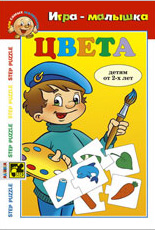 Or, for example, the game for kids “Colors”. It is a didactic mosaic for kids. Consists of eight large cardboard cards, cut into 2 elements using PUZZLE technology. Some halves of the cards depict objects familiar to the kids, and others show pencils matching their color.
Or, for example, the game for kids “Colors”. It is a didactic mosaic for kids. Consists of eight large cardboard cards, cut into 2 elements using PUZZLE technology. Some halves of the cards depict objects familiar to the kids, and others show pencils matching their color.
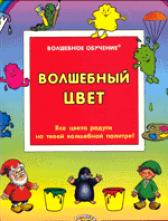 And also a good developing game “Magic Color”. Included: a playing field (33 x 48 cm in a U-turn) - a castle on the river bank, a small book with text and tasks “Journey to the Gnome or the Color Kingdom” and a set of reusable stickers - gnomes, mole , all the colors of the rainbow and more. . All the colors of the rainbow on your magic
And also a good developing game “Magic Color”. Included: a playing field (33 x 48 cm in a U-turn) - a castle on the river bank, a small book with text and tasks “Journey to the Gnome or the Color Kingdom” and a set of reusable stickers - gnomes, mole , all the colors of the rainbow and more. . All the colors of the rainbow on your magic
the palette. Children go to a fabulous country where colorful gnomes live. Playing with magic Velcro, they will learn what the colors of the rainbow are, the primary colors, cold and warm, contrasting and close. Good wizards will tell you how to create new color combinations that will help the child when he picks up paints and brushes.
If something goes wrong
Some parents and teachers, seeing that the child stubbornly continues to confuse colors, may draw erroneous conclusions regarding the mental abilities of the baby. If you are faced with a similar situation, do not rush. Some children may have a banal delay in their early development, but over time, everything will form and the child will catch up with his peers.
Another reason that children can not distinguish colors is a violation of photosensitivity. This is when the child's perception of any individual colors and shades is impaired. Moreover, it often happens that such violations are not diagnosed at all, since the baby has learned to distinguish colors by brightness and contrast.
It also happens that a child at four years old does not just confuse colors, but almost does not distinguish between them. This may be due to a variety of reasons, among which there are three main ones:
- The study of flowers began too late, the baby has not yet mastered these names completely and cannot easily apply the knowledge received from parents in practice.
- A peculiar pace of assimilation of information, which may be associated with the temperament of the child, it is quite possible that he already perfectly remembered everything, just until he himself risked making certain statements about the colors of objects.
- Vision problems, and in this case, it is best to go to the doctor's office once more and hear his recommendations, rather than think and guess what will happen next.
In general, the study of flowers with a child should be approached carefully and responsibly, but at the same time calmly. The game mood is very important, with it the child to learn this rather complicated topic will be much easier and more interesting.
Everyone understands that baby to three years must be able to distinguish colors and be able to call them. Of course, the child cannot remember all the color diversity at once, but he must distinguish and know the basic colors, such as: red, blue, yellow, green, white and black.
We also read:How to teach a child to hold a pen and pencil correctly - 8 ways
Video instructions and tips
The video provides recommendations for teaching children with CRA to distinguish colors. You can deal with your child at home quite successfully and get amazing results. Systematic creative classes have a beneficial effect on the development of attention, imagination, memory of a child, fine motor skills, thinking, speech, help to develop faster, catching up, and sometimes even ahead of peers with whom such classes were not conducted.
***
***

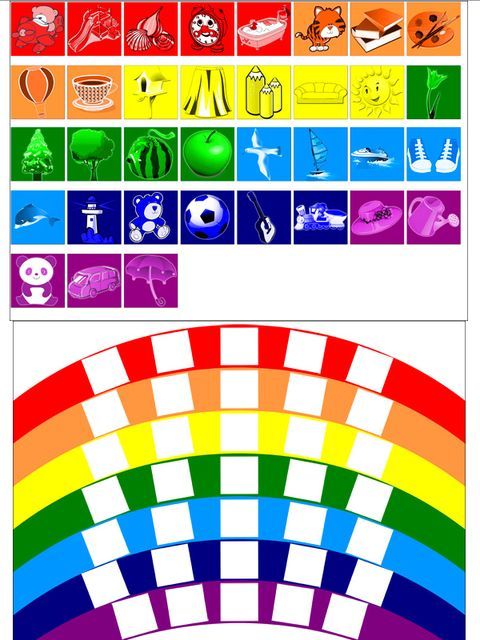
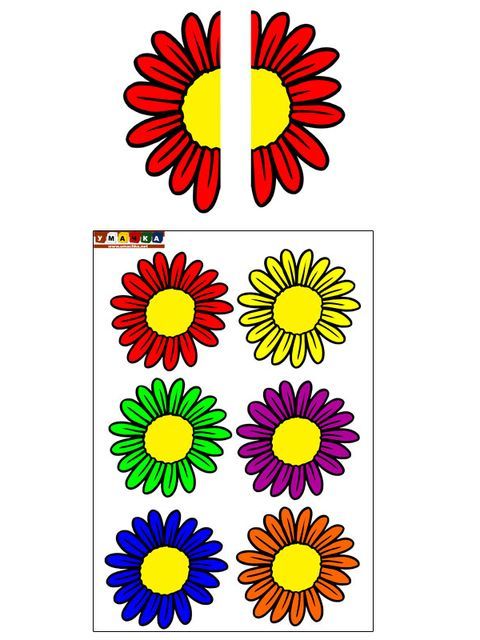








When my child was small, we remembered colors by comparing the most basic things. For example, I took a yellow pencil and we compared it with the sun, blue with the sky, etc. Here are also presented very good memorization methods that you can choose, but, as they say, to each his own.
In my opinion, children's toys are often arranged so that the shapes of objects and colors vary in them. With the help of such items it is difficult to assess the color perception of the child, since he probably has a scattering of attention to the whole variety of game material. Thus, in order to learn to distinguish colors, or rather find the same, I would recommend a toy in the form of objects of the same shape and size, differing only in color, which must be identified in its place with the corresponding color.
Good advice, but grammatical errors in the text spoil the whole impression!
Spelling
Thanks for the practical recommendations. We have some difficulties in mastering the colors. I read it in a very timely manner, I think I will use some of your advice.